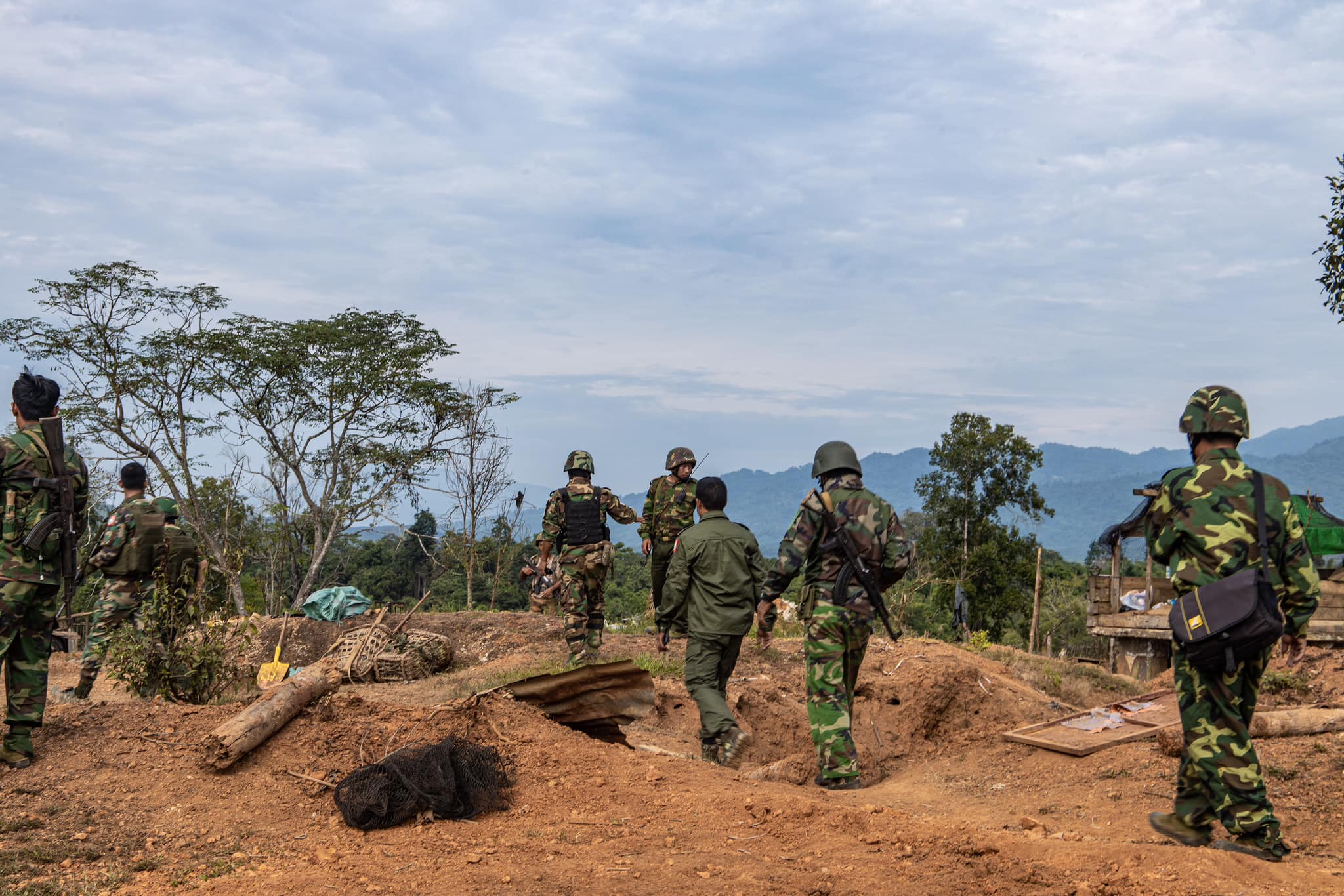The Kachin army captures two of three targeted junta posts as the junta and the Shanni Nationalities Army jointly defend the third
Maung Shwe WahKyaw OoNovember 10, 2023

The Kachin Independence Army (KIA) captured two of three Myanmar army camps it attacked early on Thursday morning in Hpakant Township, Kachin State, alongside the Kachin People’s Defence Force (KPDF), according to members of both groups.
The targeted sites were each located around 300 metres apart and near Se Zin village, a gold-rich area on the Uru River, and on Hpakant’s border with Homalin Township in Sagaing Region. The siege began at 3am on Thursday.
By 8am, the allied resistance forces had dominated two of the sites, but military airstrikes prolonged the fighting, a KPDF fighter said, noting that the junta was holding onto the third camp with the help of the Shanni Nationalities Army (SNA), which is active in the area.
“We only have two so far. There is one left,” the KPDF member explained. “[We’ve] been fighting since the early morning—it’s not done yet. Also, because [the military and the SNA] are working together, it’s hard to tear them down. They have also been shooting at us from planes.”
KIA spokesperson Col Naw Bu also confirmed that two of the camps had been seized.
At the time of reporting, battles were still ongoing.
Local media outlet Kachin News Group reported that the strategic camps over which the SNA established control in the Se Zin area of Hpakant and Homalin in 2021 have provided support to the junta.
On October 31, the KIA seized the important Kandawyan (B) Gandaungyan junta camp in Waingmaw Township along the 120-mile stretch of road connecting the Kachin State capital of Myitkyina with Bhamo (Banmaw). The military has since been launching occasional attacks on the surrounding area using aircraft.
The KIA also captured two hilltop posts on the same road between Waingmaw and Momauk townships on October 20. In the days prior, the group overran Tawataing camp in Nga Bat Gyi village in Shwegu Township, as well as the Winlawtaung camp in Mongko, on northern Shan State’s border with China.
The KIA’s recent gains coincide with the October 27 launch of Operation 1027 by three other ethnic resistance forces in the region calling themselves the Brotherhood or Three Brotherhood Alliance: the Ta’ang National Liberation Army (TNLA), the Myanmar National Democratic Alliance Army (MNDAA), and the Arakan Army (AA), accompanied by local PDF chapters. They have taken control of several towns and seized more than 120 junta bases in just over two weeks.
When the TNLA, MNDAA, AA, and KIA would fight together in the past, they would do so under the umbrella of the Northern Alliance—all are members of the Federal Political Negotiation Consultative Committee, a negotiating bloc led by the United Wa State Army.
